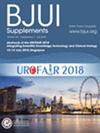To understand the facilitators and barriers to the implementation of renal tumour biopsy (RTB) in the diagnostic pathway for renal tumours in England.
Participants consisted of patients who had a renal tumour diagnosed and/or treated at one of five tertiary centres in England, healthcare professionals involved in the direct care of patients diagnosed with renal tumours, and clinical service managers and commissioners. The study employed a mixed-methods research methodology consisting of individual interviews and an on-line survey that explored the types of facilitators and barriers individuals perceived and experienced and the frequency in which these were reported. A public dissemination event took place following the completion of data collection; to facilitate discussion of potential solutions to implementing RTB.
There were 50 participant interviews (23 patients, 22 clinicians, and five health service commissioners/operations managers). The patient on-line survey received 52 responses, and the clinician survey received 22 responses. Patients most frequently reported influences in choosing whether to undergo RTB pertained to wanting to know the diagnosis of their kidney mass (40%), the advice or information provided by healthcare professionals (40%), and not wishing to delay treatment (23%). Clinicians most frequently reported barriers to recommending RTB related to their uncertainty of diagnostic accuracy (56%), availability of appointments or hospital beds (52%), concerns of risk of bleeding (44%), risk of seeding (41%), and delays in meeting national cancer pathway targets (41%). The dissemination event was attended by 18 participants (seven patients and 11 clinicians). Suggestions to improve implementation included reducing variation and promotion of standardisation of practice by a consensus statement, increasing the evidence base (clinicians) and improved communication by developing better patient aids such as videos and diagrams (patients and clinicians).
Implementation of RTB may be dependent on the quality of information provided, its format and perceived reliability of the information. Increased utilisation of RTB may be improved by development of a consensus statement on the role of biopsy, with patients expressing a preference for alternative information aids such as patient videos.


